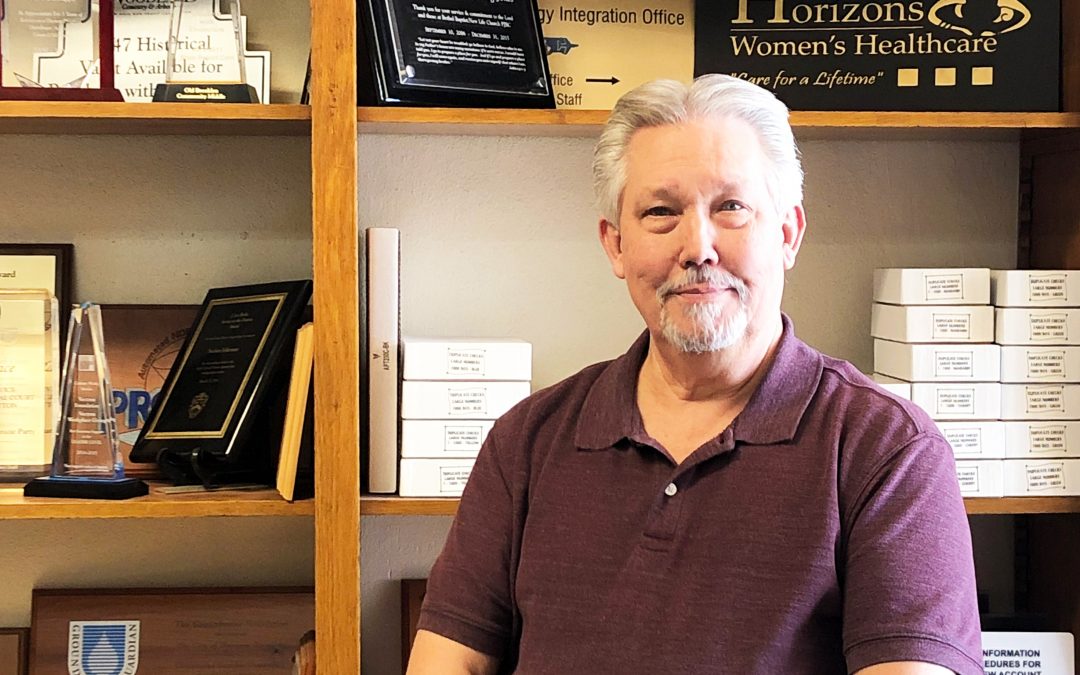In the 1850s, a craftsman named Henry Rice of Massachusetts decided he would do better as a stencil-maker in Ohio, and so, legend has it, he walked all the way from his home state to Dayton. He brought his stencil-carving tools with him. In Dayton, he pitched a tent and went to work, making stencils that were used to mark whiskey and beer barrels.
“At the time, Dayton was a distillery town. That’s the reason our downtown streets are so wide, so that whiskey wagons could make U-turns,” said Mike Bertke, with Dayton Stencil Works, the company that Rice founded.
Rice did well, moving his business from a tent to a storefront. Dayton Stencil Works is just a few blocks from the Missionaries’ office in downtown Dayton office. And last month, Dayton Stencil made a new seal for the United States Province of the Missionaries of the Precious Blood.
Seals “have been used as a means of communication, identification and authentication since the beginning of recorded history, and in fact are some of our earliest records. Seal impressions from Mesopotamia date back as far as 7,500 years ago,” according to the Imprint Project, a British organization that studies medieval seals.
The Missionaries use their embossing seal for corporate documents as well as canonical documents, such as requests for ordinations, or any official correspondence with the Vatican or General Curia, said Fr. Jeffrey Kirch, C.PP.S., the provincial director.
An embossing seal makes its imprint in paper; other seals make an impression in wax. A seal is different from a stamp, which requires accompanying ink.
Mike Bertke has worked for Dayton Stencil for 49 years. Mike produced the Missionaries’ new seal. It’s not every day that a customer walks through the company’s door on E. Second Street (as our staff members did, in early March), to order a seal, Mike said.
“Seals are going by the wayside,” Mike said. “We used to make a lot of embossing seals for corporations, and for engineers and architects, who at one time were required to have their own seal to mark their plans. Now, it’s okay for them to use stamps. But we sell stamps too, so we’re able to take care of them either way.”
At one time, making seals required an upper die made of quarter-inch brass. Seal-makers were artisans, craftsmen. “If a guy was really good, he could recreate logos in the center of the upper die. Then a master engraver could engrave the die. You would get into some very detailed work—just look at the state seal of Ohio,” Mike said.
Quality seals, like the one now owned by the U.S. Province, still use a brass die on top with a bottom die made of lead, Mike said. Some companies use laser engraving on the upper die, and bottom dies of plastic. Mike disapproves. “They break too easily,” he said.
Mike has connections to the Missionaries beyond their new seal. His father was born in Carthagena, Ohio, near the Missionaries’ St. Charles Center. His father moved the family to Dayton.
And, Mike adds, he’s done some research on his family history, and “we’re related to the Right Rev. Dwenger.” The late Bishop Joseph Dwenger, CPP.S., who negotiated the purchase of the land on which St. Charles stands, was the second bishop of Fort Wayne.
So the Missionaries’ new seal was produced by a kinsman of Bishop Dwenger, which seems fitting.
“Having lasted for the whole of recorded history, seals are still with us and continue to make an impression,” says the Imprint Project.
So does the length and reach of the Precious Blood family.

